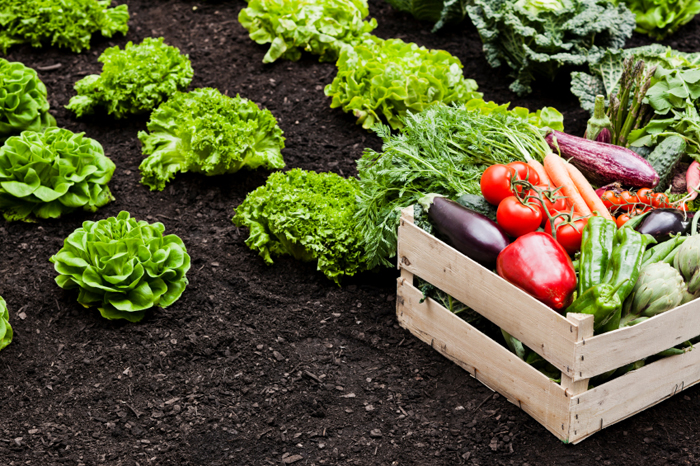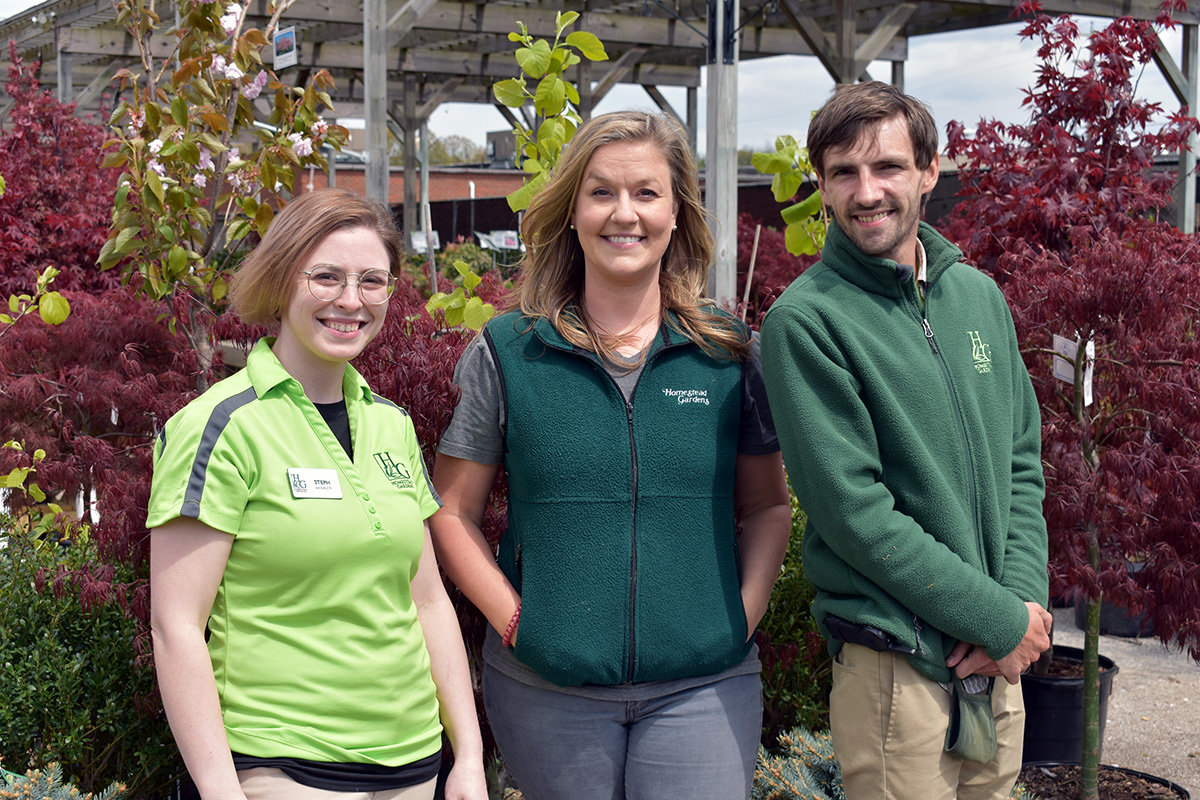Expert Tips for Flourishing Homestead Gardening Effort
Expert Tips for Flourishing Homestead Gardening Effort
Blog Article
Discover Necessary Tips for Effective Horticulture Techniques and Practices
Horticulture, usually seen as a simple leisure activity, incorporates a variety of techniques and methods that can significantly influence the result of your initiatives. By prioritizing vital aspects such as soil wellness, efficient watering approaches, and ideal plant choice, garden enthusiasts can create a successful community that sustains dynamic growth. Understanding the nuances of insect monitoring and seasonal upkeep can better boost efficiency. Lots of enthusiasts ignore crucial information that can make or break their gardening success-- exploring these neglected facets may disclose the trick to cultivating a growing garden.
Recognizing Soil Wellness
Soil health is an essential facet of successful gardening, as it directly affects plant growth, vitamins and mineral schedule, and ecological community balance. Healthy soil is defined by a rich biodiversity of microorganisms, raw material, and a well balanced pH degree, which with each other produce an atmosphere favorable to plant development.
To comprehend dirt wellness, one need to consider its physical, chemical, and biological residential or commercial properties. The texture and structure of dirt influence its capacity to retain moisture and nutrients, while the chemical structure determines the accessibility of essential elements like phosphorus, nitrogen, and potassium. Normal soil screening is important to evaluate these variables, allowing garden enthusiasts to make enlightened decisions regarding modifications and fertilizers.
Furthermore, advertising biological task within the dirt is essential for maintaining its wellness. Practices such as composting, crop turning, and using cover crops can improve microbial variety, boost nutrient biking, and reduce soil disintegration. By prioritizing dirt wellness, gardeners not only optimize plant development yet additionally contribute to a lasting ecosystem, ensuring that their horticulture practices are durable and eco accountable over time.
Effective Watering Techniques
Making sure that plants receive the proper quantity of water is essential for their health and development, especially when combined with a strong structure of soil health and wellness (Homestead Gardening). Reliable sprinkling techniques can considerably affect plant vigor, decreasing water wastefulness and advertising optimal development
One fundamental technique is deep watering, which urges roots to expand deeper into the dirt, enhancing dry spell resistance. This strategy generally involves watering less often yet in larger quantities, allowing dampness to permeate the root area extensively. Timing is also essential; early morning is the perfect time to water, as it reduces evaporation and permits foliage to dry throughout the day, minimizing condition dangers.
Additionally, employing mulch can assist maintain dirt dampness and manage temperature level, more aiding effective watering methods. Making use of a drip watering system can additionally provide targeted wetness straight to the roots, making certain that water gets to where it's most required while saving resources.
Keeping track of rainfall and dirt moisture degrees can direct adjustments in your watering routine, guaranteeing plants receive constant hydration without over-saturation. By embracing these efficient sprinkling strategies, gardeners can promote a successful atmosphere for their plants to prosper.
Plant Option and Positioning
How can the appropriate plant selection and critical positioning change a yard into a growing ecological community? The harmony between plant ranges and their positioning is important for developing a dynamic yard. When choosing plants, think about elements such as environment, dirt type, and sunshine exposure. Indigenous species are frequently the most effective option as they are adjusted to local conditions and call for much less maintenance.
Strategic placement includes preparing plants according to their growth routines and demands. Taller plants need to be positioned at the back of boundaries to prevent shading shorter plants. Furthermore, organizing plants with similar water and light demands can boost their development and decrease competitors for sources.
Incorporating a diversity of plants not just includes visual charm yet i thought about this likewise advertises biodiversity, bring in advantageous insects and pollinators. Take into consideration the seasonal adjustments visit this website in your garden; select a mix of evergreens, perennials, and annuals to make certain year-round passion.
Last but not least, keep in mind to evaluate the mature dimension of plants prior to growing to stay clear of congestion and make sure ample air blood circulation. Thoughtful plant selection and calculated placement develop an unified environment, allowing your yard to grow while lessening challenges.
Pest and Illness Administration
Reliable insect and illness monitoring is crucial for keeping a healthy and balanced garden community - Homestead Gardening. A positive method, combining social, organic, and chemical strategies, can significantly lower the influence of bugs and diseases on your plants

Organic controls, such as presenting helpful bugs like ladybugs or predacious termites, can maintain insect populaces in check without harming the environment. Furthermore, maintaining plant health through proper watering, fertilization, and trimming will certainly reinforce their resilience versus conditions.
When intervention is required, choose targeted chemical treatments, making sure to adhere to application standards to reduce damage to non-target organisms. Always prioritize lasting practices, as they promote long-lasting yard health and ecological equilibrium. By integrating these strategies, gardeners can efficiently manage diseases and bugs, guaranteeing flourishing plants and a productive garden.

Seasonal Upkeep Practices
During Our site each period, applying targeted upkeep techniques is crucial for maximizing yard health and productivity. In spring, focus on soil prep work by screening pH degrees and including necessary modifications. This is also the perfect time to apply plant foods and compost to maintain moisture and subdue weeds. On a regular basis examine emerging plants for insects and conditions.
As summer techniques, make certain sufficient irrigation while keeping track of for indications of stress or illness. Trim back disordered plants to encourage air blood circulation and minimize moisture around foliage. This practice not just improves plant health and wellness but likewise advertises flowering and fruiting.
With the arrival of fall, it's time to get ready for wintertime. Tidy up fallen leaves and debris to avoid insect invasions, and take into consideration planting cover plants to enrich soil health. This period is also perfect for dividing perennials and growing spring-flowering bulbs.
Final Thought
Effective gardening hinges on the combination of sound techniques in dirt health and wellness, watering, plant selection, bug administration, and seasonal maintenance. By focusing on soil testing and microbial variety, utilizing effective watering strategies, and selecting appropriate plants, gardeners can create thriving environments.
By focusing on necessary aspects such as soil health and wellness, reliable sprinkling methods, and appropriate plant selection, gardeners can develop a thriving community that sustains lively development. By prioritizing soil wellness, gardeners not just optimize plant growth yet additionally add to a sustainable ecosystem, making sure that their horticulture techniques are environmentally liable and resilient over time.
Taller plants need to be placed at the back of borders to stop shielding much shorter plants. Clean up fallen leaves and debris to protect against parasite problems, and consider planting cover crops to improve soil health.Successful gardening hinges on the combination of sound techniques in dirt health, watering, plant option, insect management, and seasonal upkeep.
Report this page